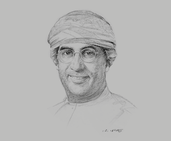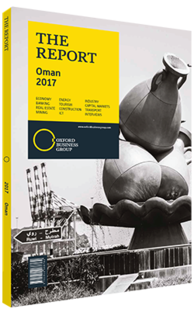Omar Al Sharif, Country Senior Partner Oman, PwC, on the sultanate’s economic diversification efforts: Interview

Interview: Omar Al Sharif
What benefits have come out of the national economic diversification programme, Tanfeedh?
OMAR AL SHARIF: The public and private sectors have worked in partnership, particularly during the second phase of the Tanfeedh programme, where six weeks of intensive lab-style workshop sessions were held. These led to the identification of 121 projects and initiatives, all linked to five main sectors. These comprise three diversification sectors (manufacturing, tourism and logistics) and two enabling sectors (the finance and labour markets). The sectors are directly tied to Oman’s diversification goals.
The efforts of Tanfeedh culminated in the establishment of the Implementation Support and Follow-up Unit, which in turn will support the implementation of initiatives and adopt the governance structures proposed in the programme. This signifies a shift in the traditional mindset of delivery that was previously adopted by the government, with a greater focus on facilitating and enabling implementation.
The 121 projects and initiatives are varied in nature and include infrastructure projects, policy reforms and changes to the business environment in Oman. It’s a really exciting time to be in Oman as we work together to implement these changes. The most positive message to come out of Tanfeedh is how the government, the public sector and the private sector have worked together to develop the next stages of the programme through open and extensive dialogue.
How might Tanfeedh assist the government in its efforts to diversify its revenue streams?
AL SHARIF: Tanfeedh’s three diversification sectors (manufacturing, tourism and logistics) have all seen consistent growth in their contribution to Oman’s GDP over the last few years. In order to continue to diversify its revenue streams – moving away from its dependency on oil and gas resources – the government needs to capitalise on this and accelerate growth in these areas. The outcomes of the initiatives identified in Tanfeedh will open up sector-specific investment opportunities to attract internal and external investment, as well as increasing in-country value by developing key infrastructure, business systems and other auxiliary industries.
A focus on downstream opportunities will enable development in the small and medium-sized enterprise space and encourage innovation. Development of the two enabling sectors, the finance and labour markets, will enhance Oman’s capability to flourish not only in the identified diversification sectors, but also in the development of the sultanate’s industries and the economy as a whole.
How does Tanfeedh set itself apart from other economic diversification plans in the region?
AL SHARIF: Tanfeedh’s transparency and the level of collaboration between its participants sets it apart from other diversification programmes both in the GCC and globally. Some 300 participants representing more than 160 organisations in both the public and private sector contributed to the second lab phase of the programme, and the results of this phase were displayed at a public exhibition lasting three days, where members of the public were invited to provide feedback on the proposed initiatives.
Tanfeedh’s initiatives are accompanied by clear key performance indicators and budgets, with defined ownership of each project. There has been interest from senior government decision-makers in support of the programme, at both the undersecretary and ministerial levels. The participation of ministers and others at senior levels of government has benefitted all stages of the Tanfeedh process, allowing participants to gain feedback, direction and approvals regarding the viability of suggested initiatives. This buy-in from all stakeholders will be key to ensuring the success of Tanfeedh as it moves to the implementation phase.
You have reached the limit of premium articles you can view for free.
Choose from the options below to purchase print or digital editions of our Reports. You can also purchase a website subscription giving you unlimited access to all of our Reports online for 12 months.
If you have already purchased this Report or have a website subscription, please login to continue.

